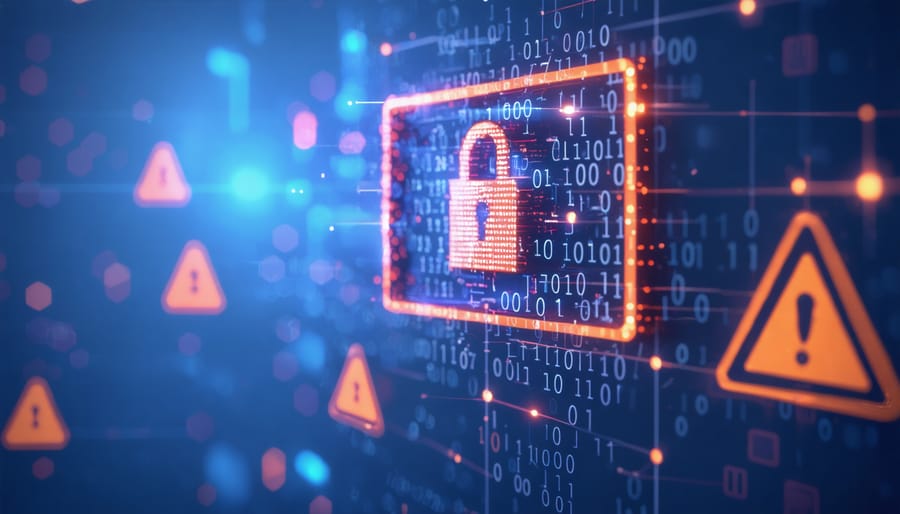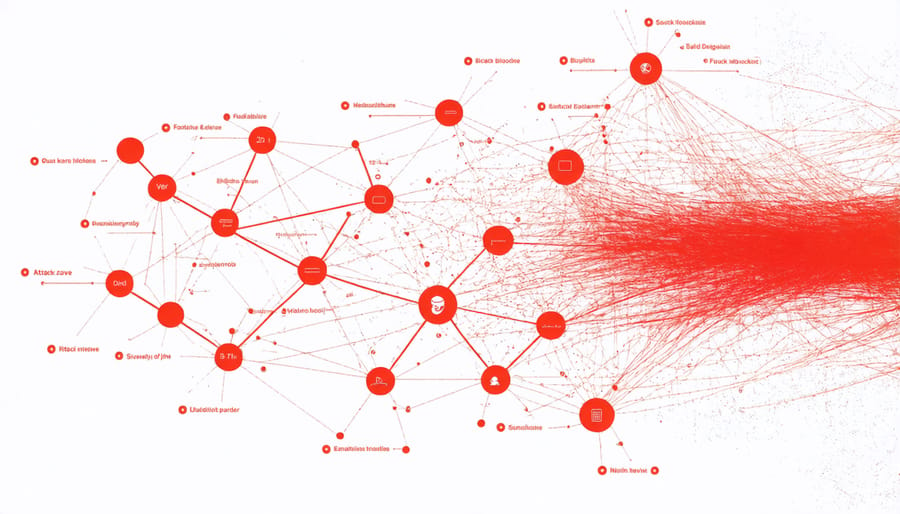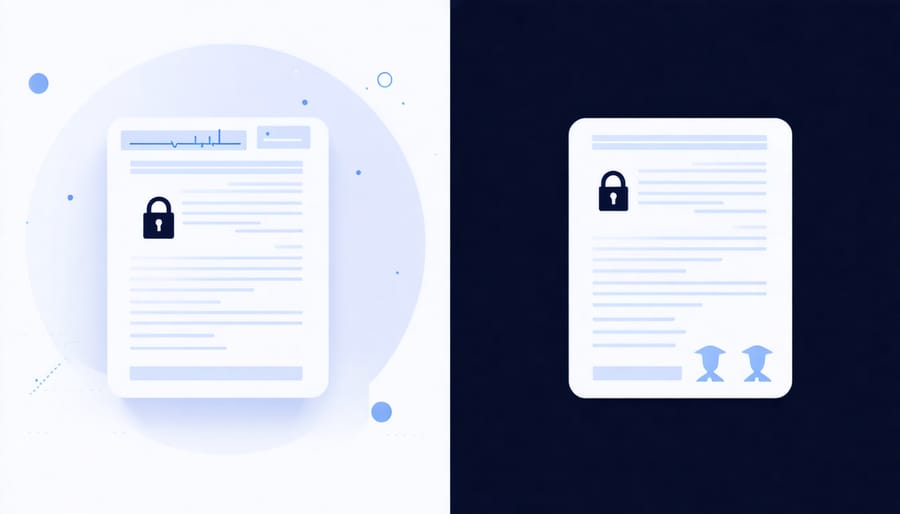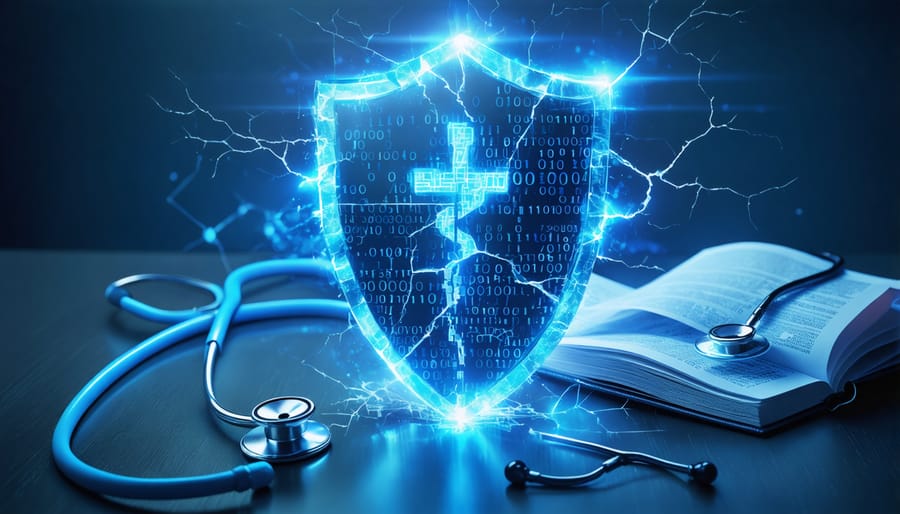Blockchain networks, despite their reputation for security, face significant vulnerabilities that can compromise sensitive healthcare data. While blockchain safeguards for health records offer robust protection, understanding these risks is crucial for healthcare providers and patients alike. From smart contract flaws to consensus mechanism attacks, these security gaps could expose personal health information to unauthorized access. The growing integration of blockchain in healthcare management systems makes addressing these vulnerabilities more urgent than ever. Recent studies show that 51% attacks, private key theft, and coding errors remain the top threats to blockchain security, potentially affecting millions of patient records. By identifying these vulnerabilities early, healthcare organizations can implement stronger protection measures and ensure the confidentiality of sensitive medical data while maintaining the benefits of decentralized record-keeping.

Smart Contract Vulnerabilities in Health Data Systems
Access Control Flaws
Access control vulnerabilities in blockchain systems can put your personal health information at risk. These flaws occur when the system’s permissions aren’t properly set up or managed, potentially allowing unauthorized users to view, modify, or share sensitive health data.
Think of access controls like the security levels in a hospital – different staff members have different levels of access based on their roles. In blockchain systems, similar rules determine who can see or change your health records. When these controls aren’t properly implemented, it’s like leaving certain hospital doors unlocked.
Common access control issues include weak authentication methods, improper role assignments, and inadequate permission validation. For example, a blockchain network might accidentally grant administrative privileges to regular users, or fail to revoke access when someone leaves a healthcare organization.
To protect yourself, always verify how your healthcare provider manages blockchain access controls. Ask about their security protocols and who has permission to view your records. Make sure they regularly update their access control systems and conduct security audits to identify potential vulnerabilities.
Data Encryption Weaknesses
While blockchain technology is known for its security features, the encryption methods used to protect health data can have vulnerabilities. One common weakness occurs when encryption keys aren’t properly managed or stored, potentially allowing unauthorized access to sensitive health information. Think of it like leaving a spare house key in an obvious place – it defeats the purpose of having a lock.
Another concern is the use of outdated or weak encryption algorithms. As computing power advances, some encryption methods become less effective over time. This is particularly important in healthcare, where patient data needs to remain secure for many years.
Quantum computing poses a future threat to current encryption methods. As these powerful computers develop, they could potentially break the encryption protecting health records on the blockchain. While this isn’t an immediate concern for Albertans, healthcare organizations are already planning for quantum-resistant encryption.
Implementation errors can also create vulnerabilities. When healthcare providers rush to adopt blockchain solutions without proper testing, they might accidentally create weak points in the encryption process. Regular security audits and updates are essential to maintain strong data protection.
To protect yourself, always verify that your healthcare provider uses current encryption standards and follows best practices for key management.
Network-Level Security Risks
51% Attacks and Health Records
In healthcare blockchain networks, a 51% attack could have serious implications for patient data integrity. This occurs when a single group gains control of more than half of the network’s computing power, allowing them to potentially alter or manipulate health records. For Albertans using healthcare systems that rely on blockchain technology, including medical wearables data security, this risk requires attention.
Imagine if someone could change your medication history, alter test results, or modify treatment records – this is what becomes possible during a 51% attack. While such attacks are expensive and difficult to execute on large networks, smaller healthcare blockchains might be more vulnerable. This is particularly concerning for chronic disease management systems where continuous, accurate data is crucial for proper care.
To protect against these attacks, healthcare providers in Alberta are implementing multiple security layers and working with larger blockchain networks that are harder to compromise. Patients can help by ensuring they only use approved healthcare apps and regularly reviewing their health records for any inconsistencies. It’s also important to keep copies of important medical documents outside the blockchain system as an extra precaution.

Consensus Mechanism Weaknesses
The way blockchain systems reach agreement on data changes, known as the consensus mechanism, can sometimes have weak points that affect your healthcare information’s security. Think of it like a group of doctors needing to agree on updating your medical record – if something goes wrong in this process, it could impact your data’s accuracy and safety.
One common issue is when some participants in the blockchain network act dishonestly or their systems malfunction. This can lead to what’s called a “51% attack,” where bad actors gain enough control to potentially alter or manipulate health records. For Albertans using blockchain-based healthcare services, this could mean unauthorized changes to sensitive information like medication lists or test results.
Another vulnerability occurs when the network experiences communication delays or disruptions. Just as a delay in emergency response can affect patient care, delays in blockchain consensus can create temporary inconsistencies in health records across different healthcare providers.
To protect against these risks, healthcare organizations in Alberta are implementing additional security layers and regular system audits. As a patient, you can help by regularly reviewing your health records and promptly reporting any suspicious changes to your healthcare provider.

Privacy Concerns in Blockchain Health Systems
Data Linkability Issues
While blockchain technology offers strong encryption, it’s important to understand that health data stored on these systems isn’t completely anonymous. Even when personal identifiers are removed, clever analysis can sometimes connect different pieces of information to reveal a patient’s identity. For example, when remote health monitoring systems collect data like heart rate patterns, sleep schedules, and location information, these unique combinations can act like digital fingerprints.
Think of it like putting together a puzzle – while each piece might not tell much on its own, combining multiple data points can paint a clear picture of who you are. This becomes especially concerning when blockchain records include details about specific medical conditions, appointment times, or prescription patterns.
For Albertans using blockchain-based health services, it’s crucial to understand what data is being recorded and how it might be linked. When possible, discuss with your healthcare provider about what information is essential to share and what can remain private to maintain better control over your digital health footprint.
HIPAA Compliance Challenges
While blockchain technology offers enhanced security for healthcare data, maintaining HIPAA compliance presents unique challenges. Healthcare organizations must carefully balance data accessibility with privacy requirements, ensuring that sensitive patient information remains protected while still being available to authorized healthcare providers.
A key compliance challenge lies in the immutable nature of blockchain records. Once information is recorded, it cannot be deleted – potentially conflicting with HIPAA’s “right to be forgotten” provision. Healthcare providers must implement sophisticated access controls and encryption methods to protect patient privacy while maintaining data integrity.
Additionally, the distributed nature of blockchain networks can create jurisdictional challenges. When health records are stored across multiple nodes in different locations, ensuring consistent HIPAA compliance becomes more complex. Organizations must carefully consider where their blockchain nodes are located and how data flows between them.
Smart contract vulnerabilities can also impact HIPAA compliance. If not properly coded and audited, these automated processes might inadvertently expose protected health information or fail to maintain required access logs. Regular security audits and updates are essential to maintain both blockchain security and HIPAA compliance standards.
Protecting Your Health Data
As a patient or healthcare provider in Alberta, protecting your health data on blockchain systems requires a proactive approach. Start by using strong, unique passwords for all your healthcare accounts and enabling two-factor authentication whenever possible. Regular password updates, at least every three months, add an extra layer of security.
When accessing health records through blockchain platforms, always verify you’re using official healthcare websites or apps. Look for the secure padlock symbol in your browser and check that the web address matches your healthcare provider’s official domain.
Keep your devices secure by installing reputable antivirus software and regularly updating your operating systems. This helps prevent malware that could compromise your access credentials. Be cautious when using public Wi-Fi networks to access health information – consider using a VPN for additional protection.
Healthcare providers should implement strict access controls and regularly audit who has permission to view patient records. Staff training on security best practices is essential, including recognizing phishing attempts and proper handling of sensitive information.
For patients, maintain a record of who has access to your health data and regularly review your access logs if your healthcare platform provides this feature. Report any suspicious activity to your healthcare provider immediately.
Consider using encrypted communication methods when discussing health information electronically. Many healthcare providers now offer secure messaging systems through their patient portals – prioritize these over regular email or text messages.
Remember that while blockchain technology offers robust security features, human behavior often creates vulnerabilities. Stay informed about current security threats and follow your healthcare provider’s recommended security protocols.
Understanding and addressing blockchain security vulnerabilities is crucial for protecting your sensitive health information in today’s digital healthcare landscape. As we’ve explored, while blockchain technology offers robust security features, it’s not immune to risks. From smart contract vulnerabilities to privacy concerns, these potential weak points require our attention and proactive measures.
Remember that protecting your health data isn’t just about technology – it’s about making informed choices and staying vigilant. By understanding these security challenges, you’re better equipped to make decisions about your digital health information and how it’s managed. Stay engaged with your healthcare providers about how they protect your data, and don’t hesitate to ask questions about their blockchain security measures.
Moving forward, the healthcare industry continues to strengthen its defenses against these vulnerabilities. By staying informed and working together with healthcare providers, we can help ensure that blockchain technology remains a powerful tool for securing health information while maintaining privacy and confidentiality. Your awareness and understanding of these security considerations contribute to a safer, more secure healthcare ecosystem for everyone in our community.

